I have said previously that you should never trust the Grattan Institute on immigration or housing.
Why? Because Grattan’s immigration “research” is funded by the pro-Big Australia Scanlon Foundation, which was founded by real estate entrepreneur and rich lister Peter Scanlon:
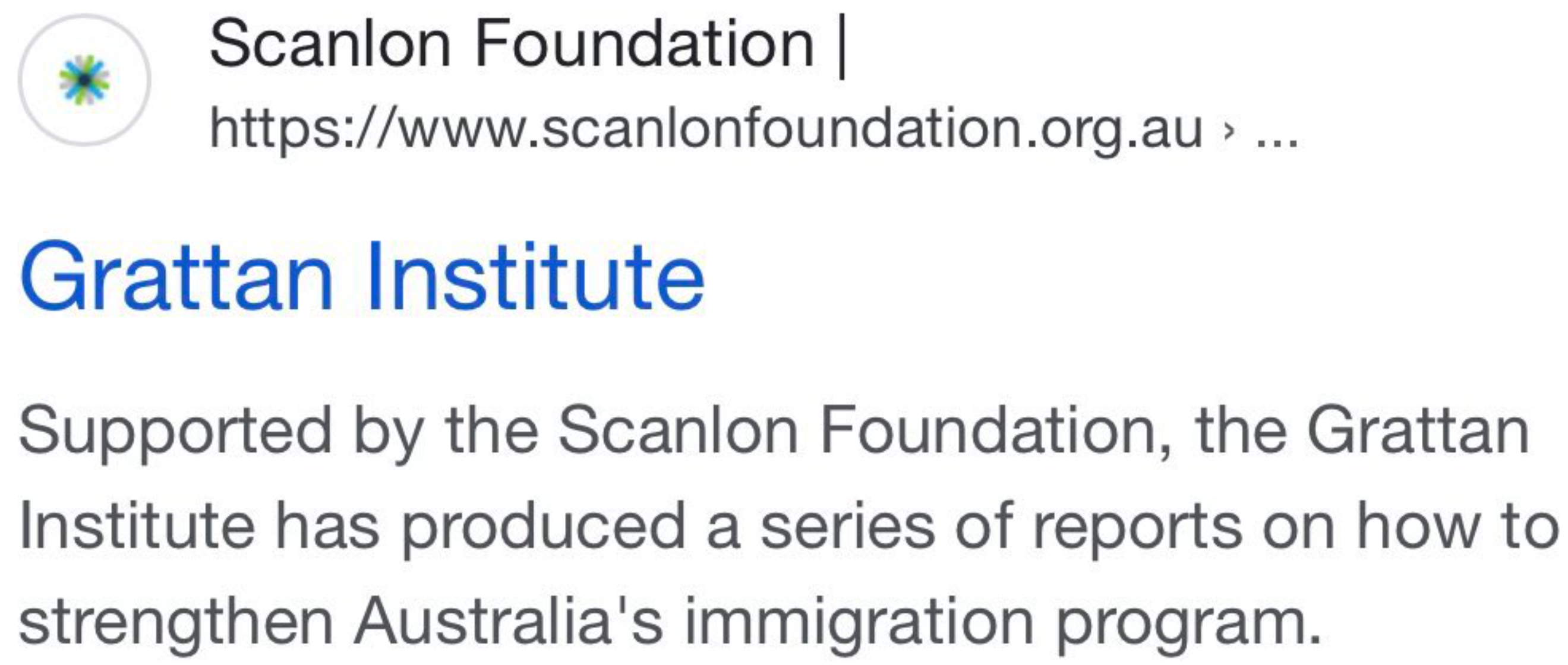
As John Masanauskas of the Herald-Sun explained in 2009 (link no longer active):
MAJOR investor and former Elders executive Peter Scanlon hardly blinks when asked if his conspicuous support for a bigger population is also good for business.
Mr Scanlon, whose family wealth is estimated to be more than $600 million, has set up a foundation with the aim to create a larger and socially cohesive Australia.
It also happens that Mr Scanlon has extensive property development interests, which clearly benefit from immigration-fuelled high population growth.
“My primary driver in (setting up the foundation) is if we don’t have growth we are going to lose all our youth because the world is looking to train people around the world,” he explains.
“Instead of having stagnant growth, we’re going to have a serious decline.”
Mr Scanlon believes that governments aren’t doing enough to sell the benefits of a bigger population so he has put his money where his mouth is…
This financial backing from the Scanlon Foundation explains why the Grattan Institute constantly spruiks the benefits of ‘strong’ migration while downplaying the negative consequences.
A classic example of Grattan’s pro-immigration bias was on display in May last year when Program Director Brendan Coates published an article in The Australian titled “Don’t blame migrants for the housing crisis“.
Coates’ central argument was that Australia has fewer migrants than was predicted by the federal budget prior to the pandemic. As such, the current record net overseas migration cannot be blamed for the housing crisis.
In August, Coates published an 18-part Twitter thread providing so-called solutions to Australia’s housing shortage.
As expected, there wasn’t a single mention of lowering immigration to a level commensurate with the nation’s ability to supply homes and infrastructure.
Now Coates and his colleague Trent Wiltshire have penned an article in The Conversation arguing that the solution to Australia’s housing crisis is to import more migrants, namely tradies and builders:
“Migrants are less likely to work in construction than in most other industries. About 32% of Australian workers were foreign born, but only about 24% of workers in building and construction were born overseas”.
“And very few recent migrants work in construction. Migrants who arrived in Australia less than five years ago account for just 2.8% of the construction workforce, but account for 4.4% of all workers in Australia”.
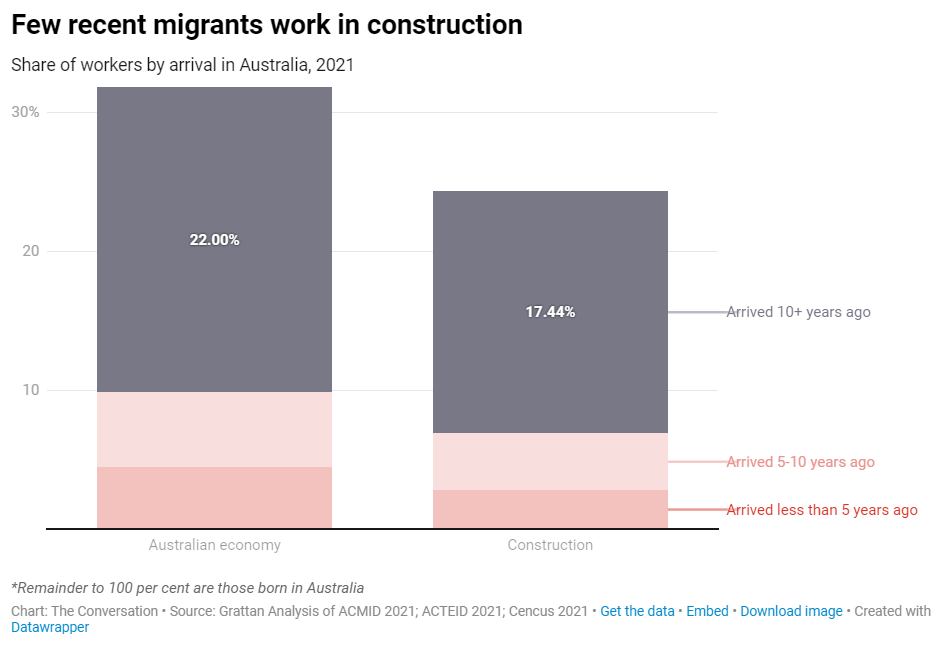
“Among those migrant groups where we’re now seeing the biggest rebound in numbers – international students, international graduates and working holiday makers – relatively few work in construction. And just 0.5% of all construction workers are on a temporary skilled visa”.
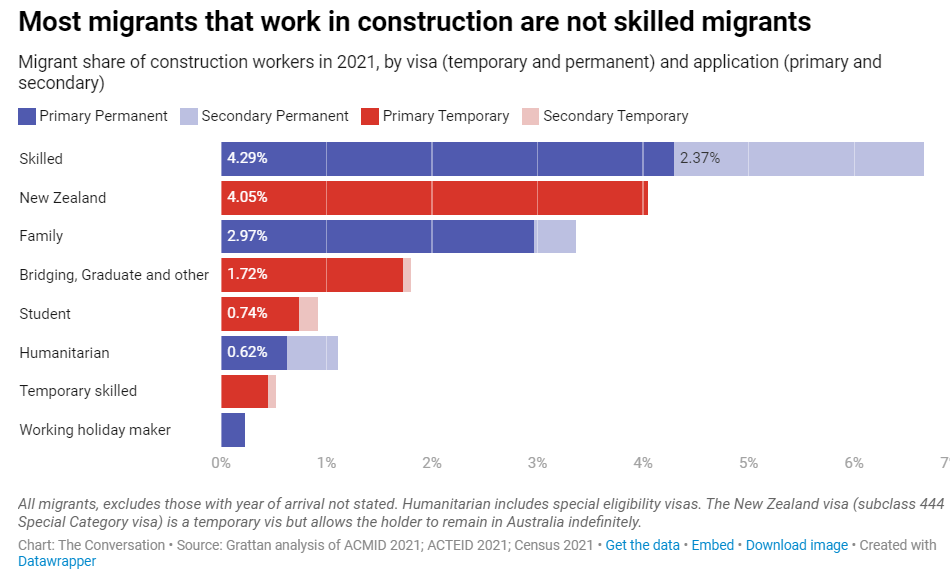
“First, the government should make it easier for employers to sponsor skilled trades workers to get a visa.”
“It should abolish labour-market testing and reduce sponsorship fees for the new “Core Skills” temporary sponsored visa stream – for skilled workers earning between A$70,000 and A$135,000 a year – to encourage more skilled trades workers to migrate to Australia.”
“The introduction of labour-market testing and extra fees like the Skilling Australians Fund Levy are big reasons why the number of visas granted to temporary sponsored workers in construction has fallen from more than 9,000 in 2011-12 to just 4,021 in 2022-23…”
“The government should also extend its new streamlined, high-wage “Specialist Skills Pathway” sponsored visa stream to skilled trades workers…”
“Second, the government should streamline the skills and occupational licensing process for skilled trades workers…”
“Migration offers big benefits to Australia. But we’d benefit even more if it provided more of the skilled workers we need to help fix the housing shortage”.
I broadly agree with Grattan that Australia’s immigration program is far too heavily weighted towards tertiary qualified people, as well as foreign students.
However, we cannot escape the fact that Australia’s overall net overseas migration (NOM) is simply far too high, and has been for nearly 20-years:
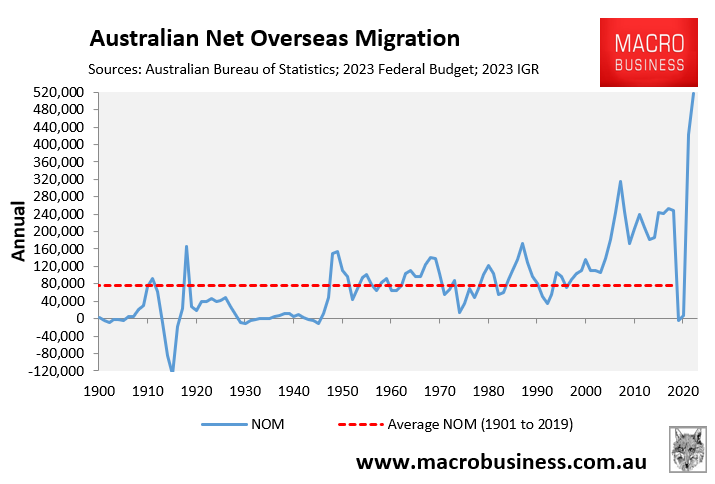
Australia didn’t build enough homes in the 15 years of ‘Big Australia’ immigration leading up to the pandemic.
And there is simply no way that we will build enough homes with current extreme NOM levels in the face of high interest rates, elevated materials costs, widespread builder insolvencies, and the like:
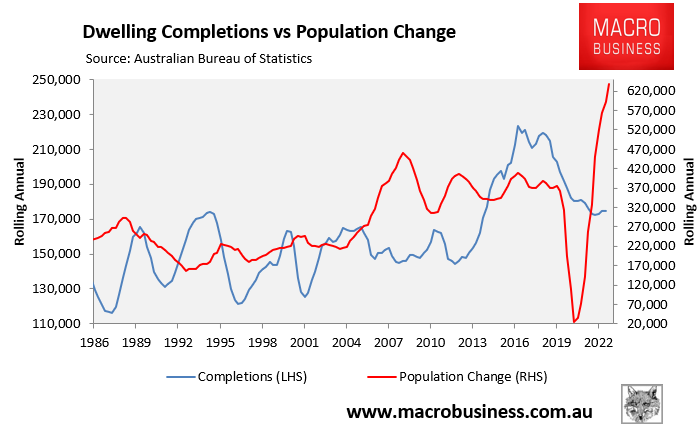
The whole notion of bringing in migrants to build homes for migrants is also circular ‘tail wagging the dog’ economics, as shown below:

Why won’t Brendan Coates and the Grattan Institute advocate for lower levels of immigration? And why do they only view the housing market through the lens of supply?
It is nonsensical to import more migrants to fix a housing shortage caused by too many migrants.
The 2023 Intergenerational Report projected that Australia’s population will swell by a whopping 14 million people (50%) over the next 40 years to 40.5 million people – equivalent to adding a combined Sydney, Melbourne, Brisbane and Adelaide to Australia’s current population.
Such extreme population growth, driven by permanently high NOM, will require the construction of around 5.5 million homes (accounting for demolitions), alongside masses of expensive infrastructure. Good luck with that.
The number one solution to Australia’s housing (and infrastructure) shortage is to moderate NOM to a level that is below the nation’s ability to supply new homes, infrastructure, and business investment, while also safeguarding the natural environment (including water supplies).
Otherwise, shortages will worsen, productivity growth will slow, and living standards will collapse.
But it’s impossible for Grattan to state the obvious when one of its key donors is the Scanlon Foundation, which was founded by a property developer to explicitly promote a ‘Big Australia’.
Always follow the money and take Grattan’s research on immigration and housing with an appropriate spoonful of salt.

